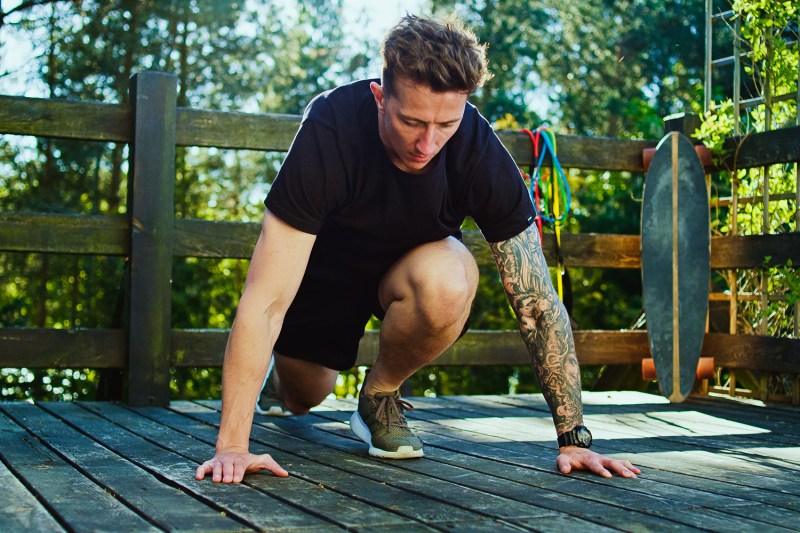
In not-so-breaking news, sitting all day isn’t the best habit for your health. Yet, many of us have desk jobs, making a sedentary lifestyle somewhat unavoidable. (Desk exercises are a thing, though.)
The good news is that you can counteract that with off-hours movement. A meta-analysis of nearly 45,000 people in four different countries published in the British Journal of Sports Medicine in 2020 indicated that about 30 to 40 minutes of exercise per day can balance 10 hours of sitting still.
The best type of exercise is the sweat-inducing type or “moderate to vigorous intensity physical activity.” However, simply standing up provides some benefits, too. The meta-analysis also found that the risk of death in individuals with more sedentary lifestyles rose if they spent less time engaging in physical activity. That may sound scary, but it’s meant to be empowering. A few actionable steps can help you reduce the impact your desk job has on your health.
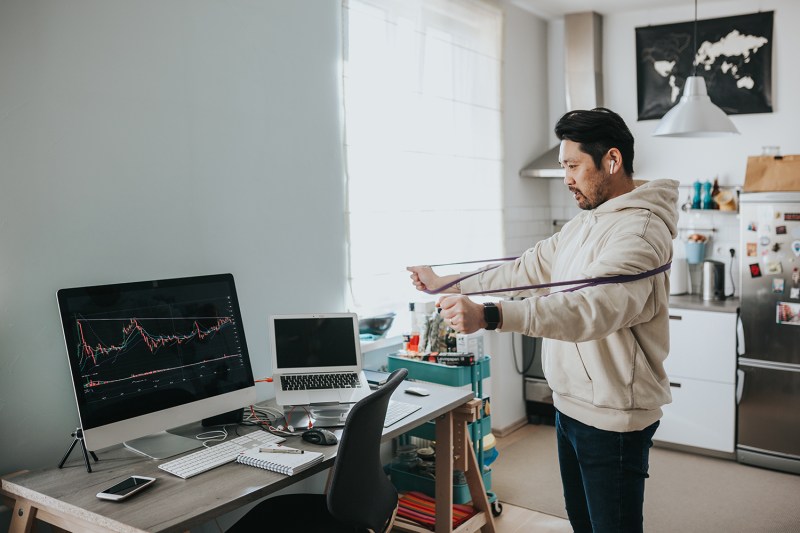
Why is it so important to exercise?
If you find yourself sitting most of the time throughout your day, whether it be at work, watching TV, or even driving, it’s vital that you make sure to get some physical activity every day.
According to Medicine Plus, a part of the National Library of Medicine, when you don’t move for long periods of time, you are more susceptible to weight gain, your bones can get weaker, your immune system could become less effective, and your blood circulation could be impacted. Getting regular exercise will help you ward off harmful conditions, such as:
- Heart disease
- High blood pressure
- Heart disease
- Type 2 diabetes
- Depression and anxiety
So, as you can see, it’s vital to work exercise into your day. But how?
Luxury workout equipment and high-end classes like those offered by Peloton and SoulCycle have become all the rage these days. However, the truth is that you don’t even need them to break a sweat (though they can be fun and motivating). You don’t even need sneakers. These easy workouts can be done indoors and out. They’ll help you work up a sweat and you can do them one right after the other. All you need is yourself, motivation, and a water bottle (and perhaps a towel to wipe up your sweat).

Jump squats
Jump squats help you build muscles and strength as well as give you a great cardiovascular workout, although people with knee, hip, or ankle issues should probably not try jump squats.
What they work: Glutes, quads, hips, and hamstrings.
- Stand up straight.
- Widen your feet so they are a smidge more than shoulder-width apart.
- Move as if you are about to sit in a chair.
- Stop just before your thighs and knees align.
- Jump.
- Land softly with knees bent.
- Get back into the squat position.
- Repeat for one minute
Note: Only lower yourself as far as you can go comfortably.
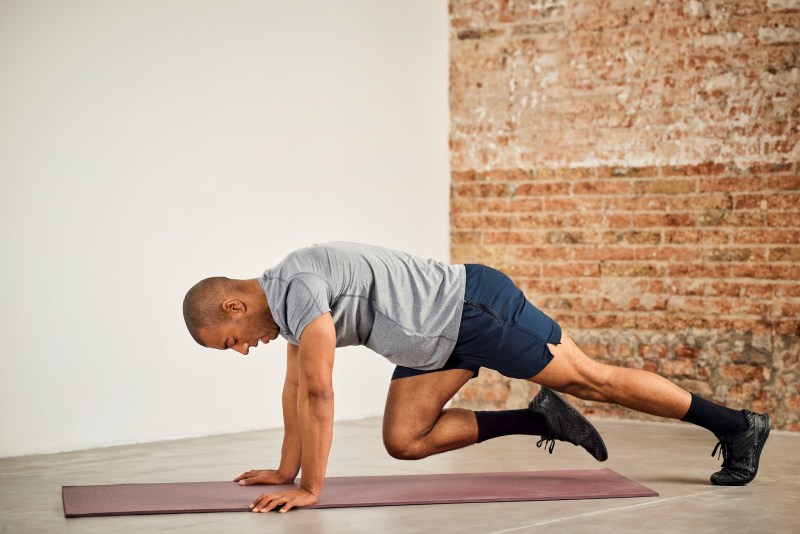
Mountain climbers
What they work: Full body, including shoulders, hamstrings, core, triceps, quads, and core.
- Assume the plank position with hands shoulder-width apart, back flat, and head in line with the rest of the body.
- Form check: Weight should be evenly distributed between hands and feet.
- Engage the abs by imagining yourself pulling your belly button to your spine.
- Bring your right knee into your chest.
- Switch legs and repeat.
- Repeat as quickly as you can.
Beginners and people coming back from injury and medically cleared by their doctors to work out can opt for a low-impact version of mountain climbers. Instead of quickly switching legs, slowly bring one knee to your chest and return it. Then, switch sides. It’ll help you get the hang of it before advancing to the faster version.

High knees
What they work: Hamstrings, quads, calves, and glutes.
- Stand up straight.
- Place feet shoulder-width apart.
- Engage your core by pulling the belly button to the spine.
- Lift your right knee, stopping just above your waist (or as high as you can comfortably go). Do the same with the left hand, similar to how you pump your arms as you run.
- Repeat on the opposite side.
Bonus: If you can find a long set of outdoor stairs, such as the ones in the stands of a local high school stadium that is open to the public, you can race up and down those instead.
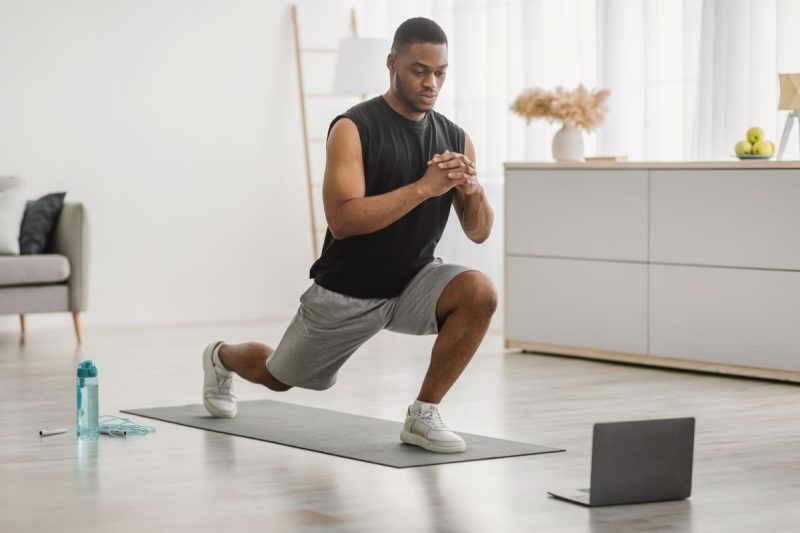
Jump lunges
What they work: Quads, hamstrings, glutes, hip flexors, and calves.
- Stand up straight with feet shoulder-width apart and arms by your sides.
- Engage the core.
- With arms still by your side, take one giant step forward using your right leg.
- Assume a lunge position by putting your weight on your right leg and lowering it until your thigh is parallel to the floor.
- Your left knee should be facing the floor with your left leg at a right angle. Lift your left heel off the floor.
- Jump up, switching your feet mid-air.
- Land so that you are in the same position as you were in steps four and five, but with your left leg forward and right one back.
- Repeat.
Beginners can take the lunge part out of it and step feet back and forth as if they are speed-walking in place. It’s still a heart-thumping workout, though the muscle-building aspect is removed.
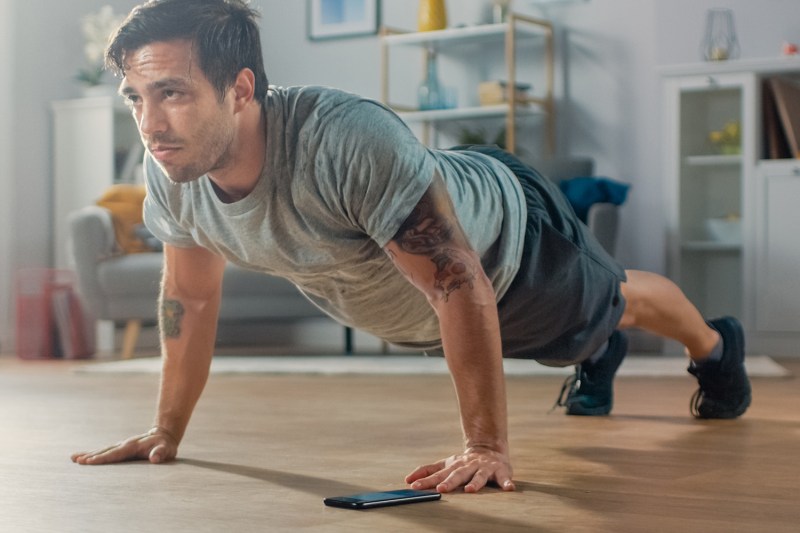
Burpees
What they work: Full body, including legs, hips, buttocks, abdomen, arms, chest, and shoulders.
- Stand with feet hip-width apart.
- Jump up, raising hands overhead.
- Land in the plank position, core engaged, with hands under shoulders. Hips, legs, and head should be in one line.
- Thrust your legs forward so you’re in a frog-like position with hands in front of the groin and legs in a seated squat position.
- Quickly jump up.
- Repeat.
Make the burpee low-impact by removing the jump. Add a challenge by doing a pushup in the plank position.
Always consult your doctor before adding a new fitness regimen to your lifestyle, even easy workouts. Your doctor can also discuss ways to improve or counteract a sedentary lifestyle. Be sure to stretch to avoid injury.
Editors' Recommendations
- 4 yoga poses to build core strength you can do anywhere
- 8 great Pilates workouts to keep you tight, toned, and feeling your best
- Knee pain doesn’t mean the end of your workout routine — here’s what to do
- 4 great back exercises that require no equipment, only your body weight
- 10 effective quad exercises you can do at home




